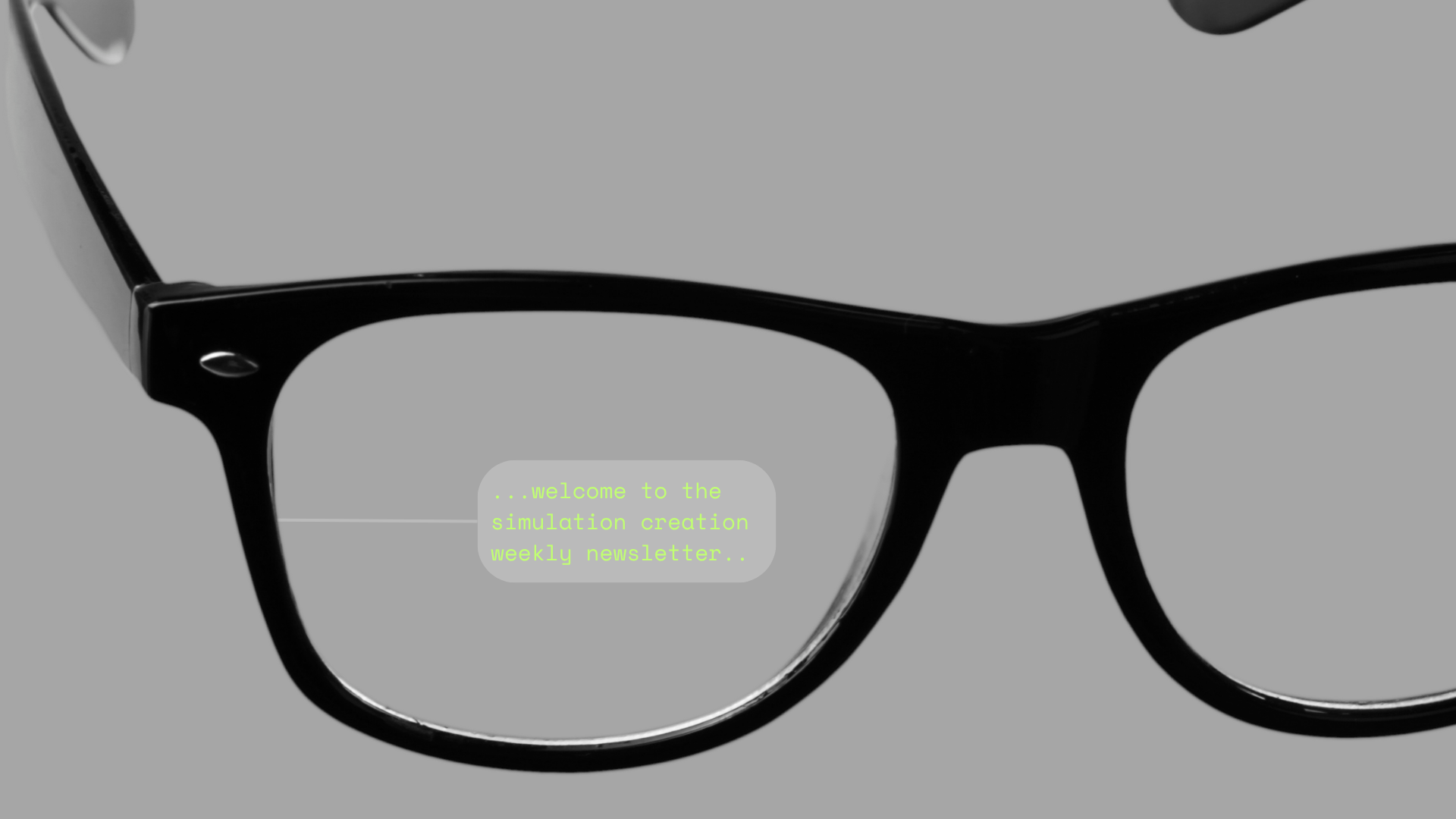Simulation Creation Newsletter: Pioneering XR Across Industries
Welcome to Issue #4 of the Simulation Creation Newsletter! As a leading XR development studio, we are constantly pushing the boundaries of Extended Reality (XR), Virtual Reality (VR), and Augmented Reality (AR) to deliver transformative solutions across diverse business sectors.

1. Industry Headlines
Lumus & Quanta Scale AR Optics Manufacturing On July 16, Lumus announced an expanded partnership with Quanta Computer Inc. to ramp up production of reflective waveguide optics—critical components for wearable AR displays. This collaboration aims to meet growing demand by leveraging Quanta’s manufacturing expertise while preserving Lumus’s high-precision optical requirements.
Freeaim Launches VR Shoes KickstarterUK startup Freeaim opened a Kickstarter on July 15 for its VR Shoes, priced from £799. These smart shoes promise immersive locomotion by tracking foot movements in virtual environments, with delivery slated for late 2025. Early backers gain exclusive access to developer SDKs for integrating the footwear into custom simulations. We interviewed Ashley Cockcroft the CEO 2 years ago, fantastic to see how far the company and product has evolved.
Maradin’s New Laser Display ModuleAlso on July 15, Maradin Ltd. unveiled its MEMS-based laser beam scanning (LBS) module for XR glasses. The compact, low-power design boasts enhanced brightness and contrast, potentially doubling field-of-view compared to current waveguide solutions—opening doors for lighter, more vivid headsets.
Ganzin’s Gaze2AI Reference Design On July 14, Ganzin Technology released Gaze2AI, an eye‑tracking reference platform for human–AI interfaces. By combining high-resolution gaze data with on‑device AI, developers can prototype attentive UIs that react to users’ visual focus—ideal for advanced training simulations and hands‑free controls.
2. Emerging Hardware Spotlight
ByteDance’s “Swan” XR GlassesReports surfaced on July 16 that ByteDance (TikTok’s parent) is developing “Swan,” a lightweight XR headset under its Pico subsidiary. Weighing just 0.28 lbs, Swan offloads processing to a detachable puck—balancing comfort and performance. If regulatory hurdles are cleared, this device could shake up the enterprise XR market alongside Meta and Apple rivals Tom's Guide.
3. Case Study: Digital Twins in Action
Port of Corpus Christi’s OPTICS Platform
On July 15, the Port of Corpus Christi showcased OPTICS (Overall Port Tactical Information Computer System), a live digital twin for real‑time operations. Built with Esri’s ArcGIS Maps SDK for Unity and Azure Event Hub streaming, OPTICS unifies vessel AIS data, police CAD incidents, and high‑fidelity 3D infrastructure into a single spatial interface accessible via mobile iOS apps Auganix.org.
Key Benefits:
- Unified Situational Awareness: Replaces siloed dashboards with a cohesive 3D view, reducing cognitive load for field teams Auganix.org.
- Mobile Field Access: Officers can view real‑time vessel locations, incident zones, and predicted paths on an iPad, accelerating response times Auganix.org.
- Expandable Architecture: Modular “Gemini” backend allows integration of live cameras, vehicle telemetry, and predictive AI layers in future updates Auganix.org.
4. Tips & Takeaways
- Leverage Modular Design: As seen with OPTICS, building simulation platforms on game engines plus GIS tools ensures both interactive performance and geographic accuracy.
- Prioritize Data Fusion: Combining live feeds (AIS, CAD, telemetry) into one spatial layer creates intuitive interfaces—consider this for your next training module.
- Plan for Iteration: Early stakeholder alignment and domain‑specific accuracy (e.g., bathymetry for marine sims) can make or break digital twin fidelity.
5. Upcoming Events
- AWE USA 2025 (September 9–11, Santa Clara) – Submit your demos for next month’s Auggie Awards.
- Unity Gaming & XR Summit (August 5–7, Online) – Workshops on ArcGIS integration and lightweight wearables.
Stay tuned for more developments next week! — The Simulation Creation Team


